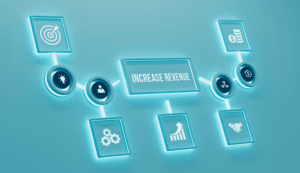
However, using specific accounting techniques listed below, they can be taken into account. These processes are required to account for any changes that occur. It is assumed that the majority of business owners know what their assets are. In general, the drawbacks of cost accounting are more significant for larger companies than for small businesses.
The cost principle, appreciation, and depreciation
- This subjectivity can lead to inconsistencies and potential manipulation, as different accountants might arrive at different valuations for the same asset.
- Over the last 11 years, the machinery’s value has depreciated to around $5,000.
- This method offers a stable and verifiable basis for financial reporting, ensuring that the recorded values are grounded in actual transactions.
- There are several different ways to account for depreciation but, in general, depreciation is treated as a loss and is expensed throughout the asset’s useful life.
- Cost accounting assists a company’s management team in carrying out its day-to-day functions of control and formulating business policies.
It should be noted that the cost concept creates problems only in relation to assets that are held by the business enterprise for use over the long term and where their values undergo significant changes. Accordingly, recording assets at acquisition cost meets the convention of objectivity. Moreover, the present value of assets constantly undergoes change, meaning that if we were to record assets based on their present value, they would need to be updated practically every day. The above discussion leads us to the conclusion that cost accounting is a systematic procedure for determining per-unit costs.
- For example, suppose that a piece of land is acquired by a business at a specific price and, accordingly, is recorded as an asset in the books at that cost.
- A number of costing methods and techniques are used for costing products, cost control, and managerial decisions.
- While there are drawbacks to using the cost principle, in most cases those drawbacks are reserved for larger companies with multiple investments or volatile, short-term securities.
- As financial markets and economic conditions fluctuate, the value of assets may increase or decrease significantly.
- Economic cost allows you to look at a variety of “what-if” scenarios and see exactly how those scenarios might affect your business and your bottom line.
Setting Up Standards to Measure Efficiency

As assets are recorded at their original cost, the carrying value of those assets remains the same, even if their market value has significantly changed. This can result in a misleading representation of a company’s financial position, especially when market values of assets have significantly increased or decreased over time. Another drawback of the Cost Principle is that it does not consider the impact of inflation. Over time, the purchasing power of money decreases due to inflation. However, the Cost Principle does not account for this decrease in purchasing power when recording assets at their original cost.
What Is Kia’s Auto Payment Grace Period
This means that over time, improvements in market value can be monitored and assessed. Cost principle is the accounting practice of recording the original purchase price of an asset on all financial statements. This historic the cost principle is used cost of an asset is used to provide reliable and consistent records. A cost principle will also include expenses incurred in purchasing the asset, such as shipping and delivery fees, as well as setup and training fees.
For example, when a retailer purchases inventory from a vendor, it records the purchase at the cash price that was actually paid. The cost principle means that a long-term asset purchased for the cash amount of $50,000 will be recorded at $50,000. If the same asset was purchased for a down payment of $20,000 and a formal promise to pay $30,000 within a reasonable period of time and with a reasonable interest rate, the asset will also be recorded at $50,000. It makes asset values objective, and it is easier to report on than other methods. To put it more simply, the original cost is far more consistent for your books. If you were to use the fair market value, the value of some assets could change from day to day.
- Scott should record the newly purchased asset at the cost he paid to purchase the copyright.
- A financial professional will offer guidance based on the information provided and offer a no-obligation call to better understand your situation.
- The cost of the office building is still listed as $250,000 on the balance sheet.
- You have proof of the purchase, and no one can tell you that the value is lower than that.
- One of the biggest advantages of cost accounting is its simplicity.
The cost on the balance sheet remains at the original price of $15,000. In 2021, the fair market value of the office building is now $1 million. The cost of the office building is still listed as $250,000 on the balance sheet.
Explanation of Accrual Accounting

However, some accountants argue that in today’s inflationary environment, many large companies are preparing supplementary information after taking into account changes in purchasing power. Any assets that are realized within a short time do not suffer from this problem. Finance https://www.bookstime.com/ Strategists has an advertising relationship with some of the companies included on this website. We may earn a commission when you click on a link or make a purchase through the links on our site. All of our content is based on objective analysis, and the opinions are our own.

Similarly, expenses are recognized when they are incurred, even if the payment has not yet been made. It’s important to note that the Cost Principle does not mean that assets are never revalued. While the initial recording of an asset is based on its acquisition cost, subsequent events or circumstances may necessitate a revaluation. The Cost Principle, also known as the Historical Cost Principle, is an accounting concept that requires assets to be recorded at their original cost when they are acquired. (h) Costs of legal, accounting, and consultant services, and related costs, incurred in connection with patent infringement litigation, are unallowable unless otherwise provided for in the Federal award.


This transparency helps prevent manipulation or misrepresentation of financial information, contributing to the integrity of financial reporting practices. However, under the cost concept, the accounting records will continue to show the value of the building at the cost price of $100,000 less depreciation. To elaborate on this concept, if an asset does not cost anything (i.e., no money is paid for its acquisition), it would not be recorded in the company’s books.